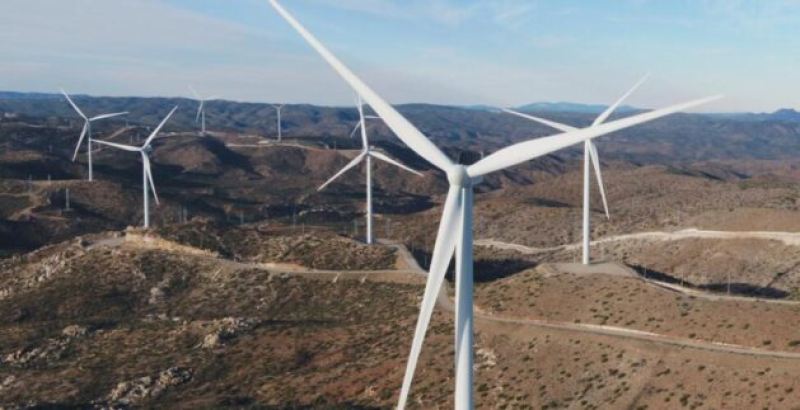- UN Launches $33 Billion Appeal to Aid 135 Million People |
- CA urges united efforts to stop food contamination voicing concern |
- Tarique obliquely slams Jamaat for ‘propaganda’ against BNP echoing AL |
- Medical team hopeful about Khaleda’s recovery in Bangladesh |
- Beanibazar green cover shrinks, migratory birds disappear |
Mexico Expands Residential Solar, But Demand Still High

A wind farm in the state of Baja California, in Northwestern Mexico. This territory depends on fossil fuels for electricity generation, while the contribution of renewables is still low, but it is gradually moving towards residential solar generation.
Over the past four months, Mexican researcher Nicolás Velázquez paid around US$23 for electricity thanks to the photovoltaic system installed in his home in Mexicali.
“You can see the direct benefit. My neighbor received a bill over US$400. The problem is high temperatures, which double demand from March to August,” said Velázquez, coordinator of the Center for Renewable Energy Studies at the Engineering Institute of the Autonomous University of Baja California.
High temperatures in Mexicali and other cities increase electricity consumption due to widespread air conditioning use in a state of 3.77 million people, which suffers from infrastructure and generation shortages.
Velázquez explained, “Distributed generation is better for us. It is done by Mexican companies. We import the technology, but there is a chain of Mexican participation. We contribute from engineering onwards, activating the economy and helping the residential sector.”
In late August, residents of several neighborhoods in Mexicali blocked the highway to Tijuana due to electricity shortages.
To address the issue, the Mexican government launched the Techos Solares del Bienestar (Solar Roofs for Welfare) program in March, targeting low-income homeowners consuming 400–1,000 kilowatt hours during July–August. The initiative aims to provide solar panels for homes in Mexicali and San Felipe.
The initial plan covers 5,500 homes with an investment of US$10 million, with a long-term goal of 150,000 homes by 2030. The program promises to reduce electricity bills by 49%–89%.
Velázquez emphasized the need for a balance between centralized and distributed generation, noting that distributed systems provide greater energy justice and community benefits.
In Mexico, home to 129 million people, at least 12,000 communities lack electricity, with about 9,000 homes unconnected to the national grid—25% of which are in Mexicali.
Small-scale or distributed generation is growing rapidly. Since 2007, the Energy Regulatory Commission has authorized 518,019 licenses for 4,497 MW of distributed energy, including 106,934 interconnections for 1,086 MW in 2024 alone. Baja California ranks 14th among the 32 Mexican states in distributed generation capacity.
President Claudia Sheinbaum’s energy policy has focused more on proposals than actions. Her government plans to invest US$12.3 billion in electricity generation, US$7.5 billion in transmission infrastructure, and US$3.6 billion in decentralized residential photovoltaic production. The goal is to reach 37.8% clean energy in the national energy matrix, up from 22.5%.
Solar and renewable projects include two solar thermal plants in Baja California Sur (US$800 million, 100 MW), phase II of the Puerto Peñasco photovoltaic plant in Sonora (300 MW + 10.3 MW battery backup), and several wind and geothermal plants in Baja California.
Despite these initiatives, the Mexican government continues to support fossil fuels, affecting the pace of the energy transition and the reliability of electricity supply in northern states like Baja California.

